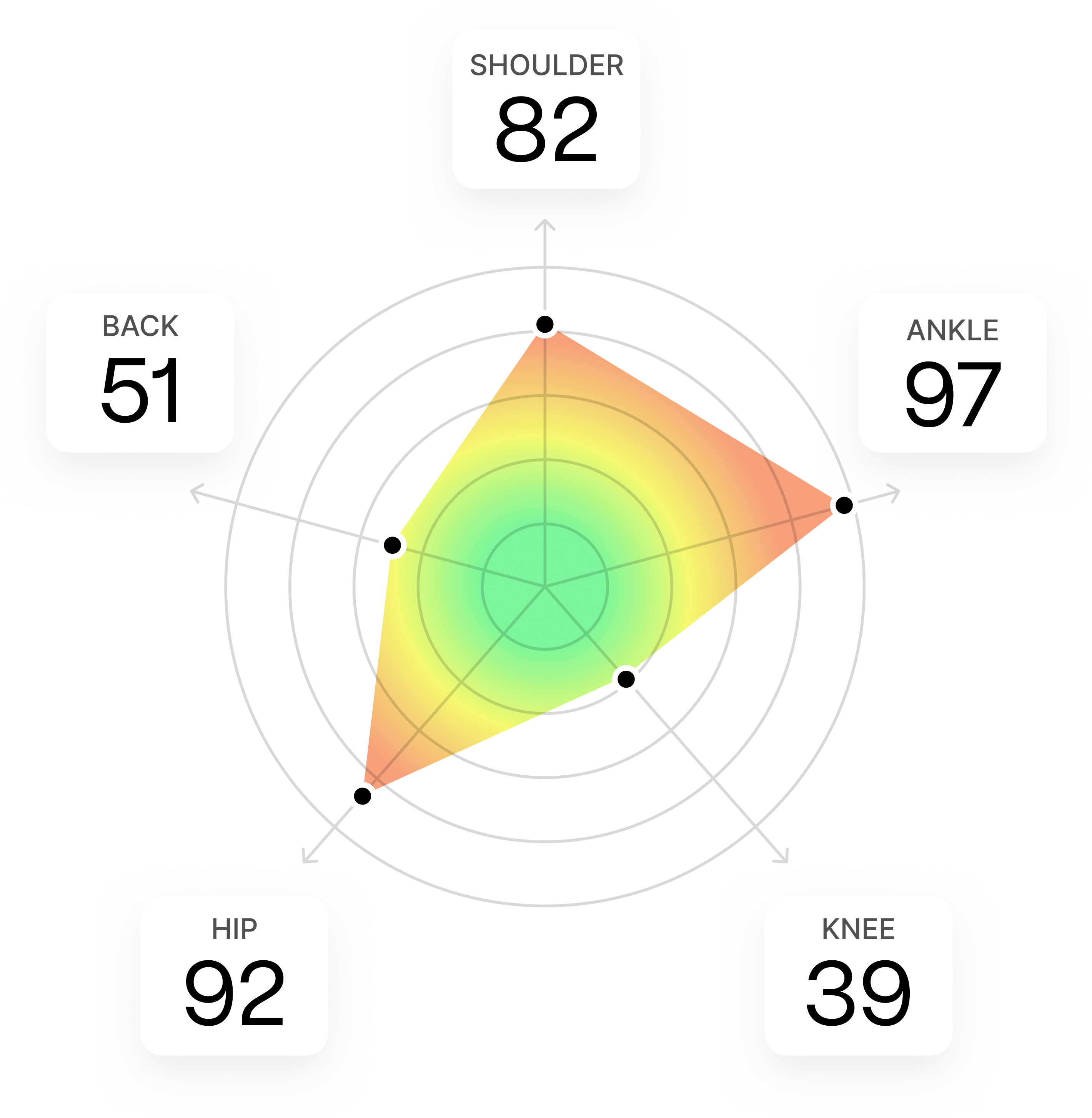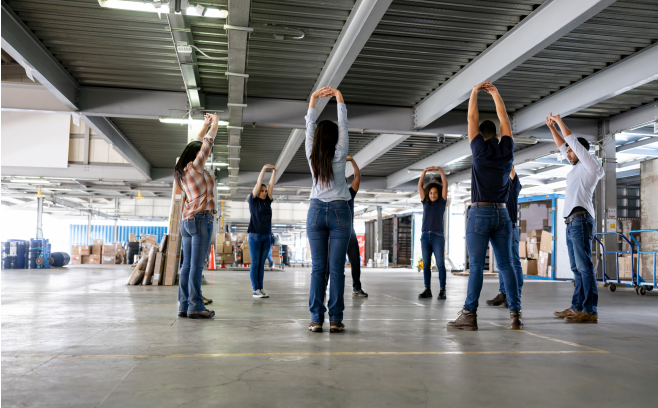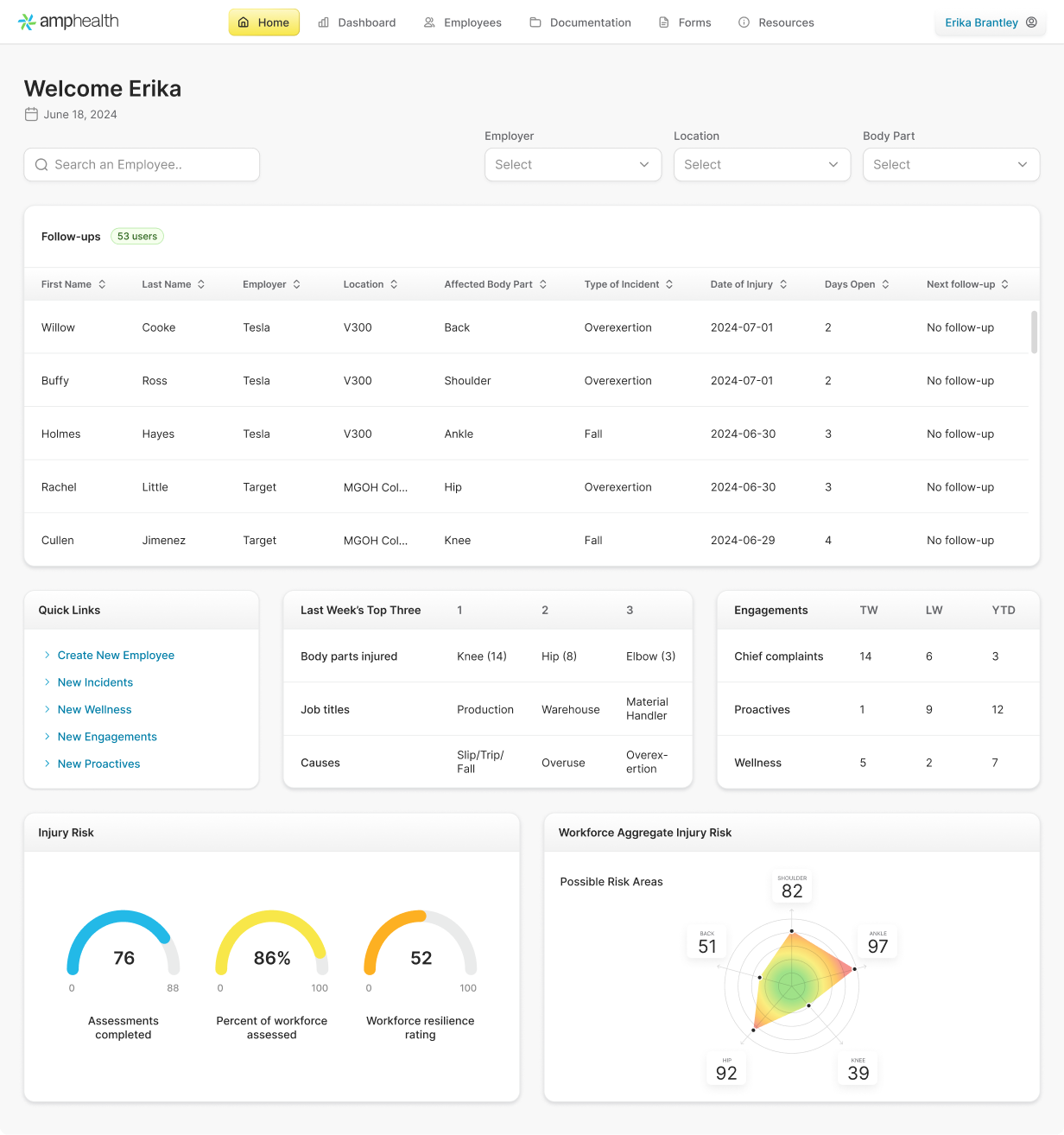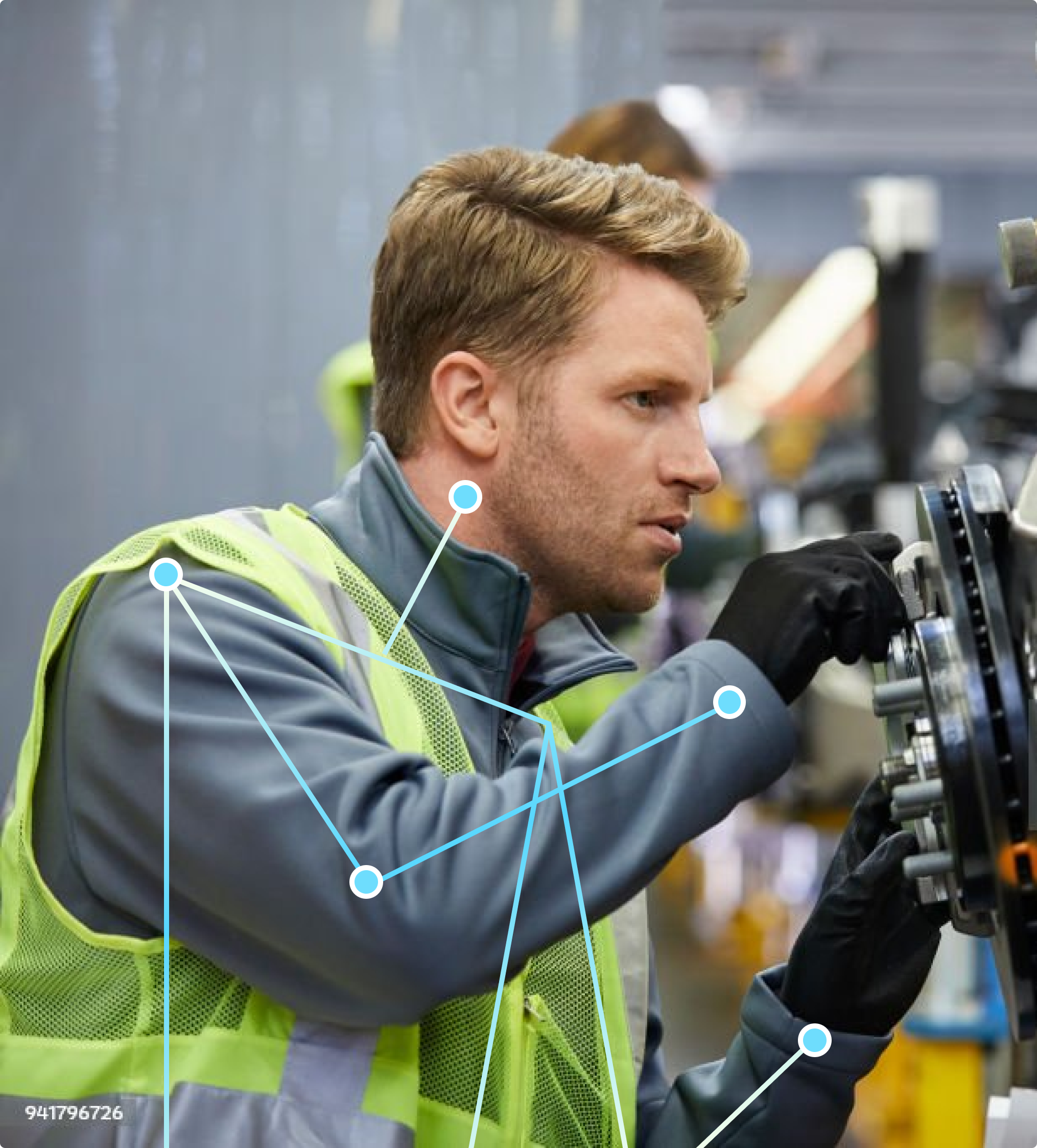AI-Native
Injury
Prevention
Platform
Designed for
Dynamic
Workforce Risk
Companies of all sizes use Amp Health to assess employee movement health, identify injury risk, implement targeted interventions, and deliver actionable reports from data collected in the workplace.
Request Demo





Specialized
The only platform purpose-built to assess, manage and prevent injury risk in the workplace.
Assess musculoskeletal injury risk, document incidents, engage employees, and analyze trends more efficiently on a fully integrated platform.
Enable Efficiency
Mobility
Resilience
Symmetry
Unify
Break free from the limitations of point solutions.
Say goodbye to costly fragmentation. Consolidate your tools into one powerhouse platform for streamlined incident documentation and unparalleled data integrity.
Enhance Documentation

Evaluate
Unlock the power of real-time data.
Advanced computer vision technology accurately assesses employee movements in real time, enabling interventions to minimize the risk of workplace injuries.
Get Better Data Faster

Analyze
Deliver actionable insights and tangible results.
Demonstrate the value of proactive engagements, employee interventions, and wellness services that lead to cost savings, employee retention, and higher productivity.
Generate Enterprise Analytics

Engage
Foster a culture of trust and engagement.
Develop a resilient, high-performing workforce capable of thriving in today’s dynamic business landscape.
Maximize Team Potential

Ready to get started?
Schedule a personalized consultation and demo of the AMP health platform.
Let’s Talk
Interested? See how Amp can help.
Request Demo

© 2025 Amp Health, All rights reserved
AI-Native
Injury
Prevention
Platform
Designed for
Dynamic
Workforce Risk
Companies of all sizes use Amp Health to assess employee movement health, identify injury risk, implement targeted interventions, and deliver actionable reports from data collected in the workplace.
Request Demo





Mobility
Resilience
Symmetry
Specialized
The only platform purpose-built to assess, manage and prevent injury risk in the workplace.
Assess musculoskeletal injury risk, document incidents, engage employees, and analyze trends more efficiently on a fully integrated platform.
Enable Efficiency
Unify
Break free from the limitations of point solutions.
Say goodbye to costly fragmentation. Consolidate your tools into one powerhouse platform for streamlined incident documentation and unparalleled data integrity.
Enhance Documentation


Evaluate
Unlock the power of real-time data.
Advanced computer vision technology accurately assesses employee movements in real time, enabling interventions to minimize the risk of workplace injuries.
Get Better Data Faster
Analyze
Deliver actionable insights and tangible results.
Demonstrate the value of proactive engagements, employee interventions, and wellness services that lead to cost savings, employee retention, and higher productivity.
Generate Enterprise Analytics


Engage
Foster a culture of trust and engagement.
Develop a resilient, high-performing workforce capable of thriving in today’s dynamic business landscape.
Maximize Team Potential
Ready to get started?
Schedule a personalized consultation and demo of the AMP health platform.
Let’s Talk
Interested? See how Amp can help.
Request Demo

© 2025 Amp Health, All rights reserved
Solutions
Who We Serve
Industries
Insights
About
Request Demo
AI-Native
Injury
Prevention
Platform
Designed for
Dynamic
Workforce Risk
Companies of all sizes use Amp Health to assess employee movement health, identify injury risk, implement targeted interventions, and deliver actionable reports from data collected in the workplace.
Request Demo





Mobility
Resilience
Symmetry
Specialized
The only platform purpose-built to assess, manage and prevent injury risk in the workplace.
Assess musculoskeletal injury risk, document incidents, engage employees, and analyze trends more efficiently on a fully integrated platform.
Enable Efficiency
Unify
Break free from the limitations of point solutions.
Say goodbye to costly fragmentation. Consolidate your tools into one powerhouse platform for streamlined incident documentation and unparalleled data integrity.
Enhance Documentation


Evaluate
Unlock the power of real-time data.
Advanced computer vision technology accurately assesses employee movements in real time, enabling interventions to minimize the risk of workplace injuries.
Get Better Data Faster
Analyze
Deliver actionable insights and tangible results.
Demonstrate the value of proactive engagements, employee interventions, and wellness services that lead to cost savings, employee retention, and higher productivity.
Generate Enterprise Analytics


Engage
Foster a culture of trust and engagement.
Develop a resilient, high-performing workforce capable of thriving in today’s dynamic business landscape.
Maximize Team Potential
Ready to get started?
Schedule a personalized consultation and demo of the AMP health platform.
Let’s Talk
Interested? See how Amp can help.
Request Demo

© 2025 Amp Health, All rights reserved






